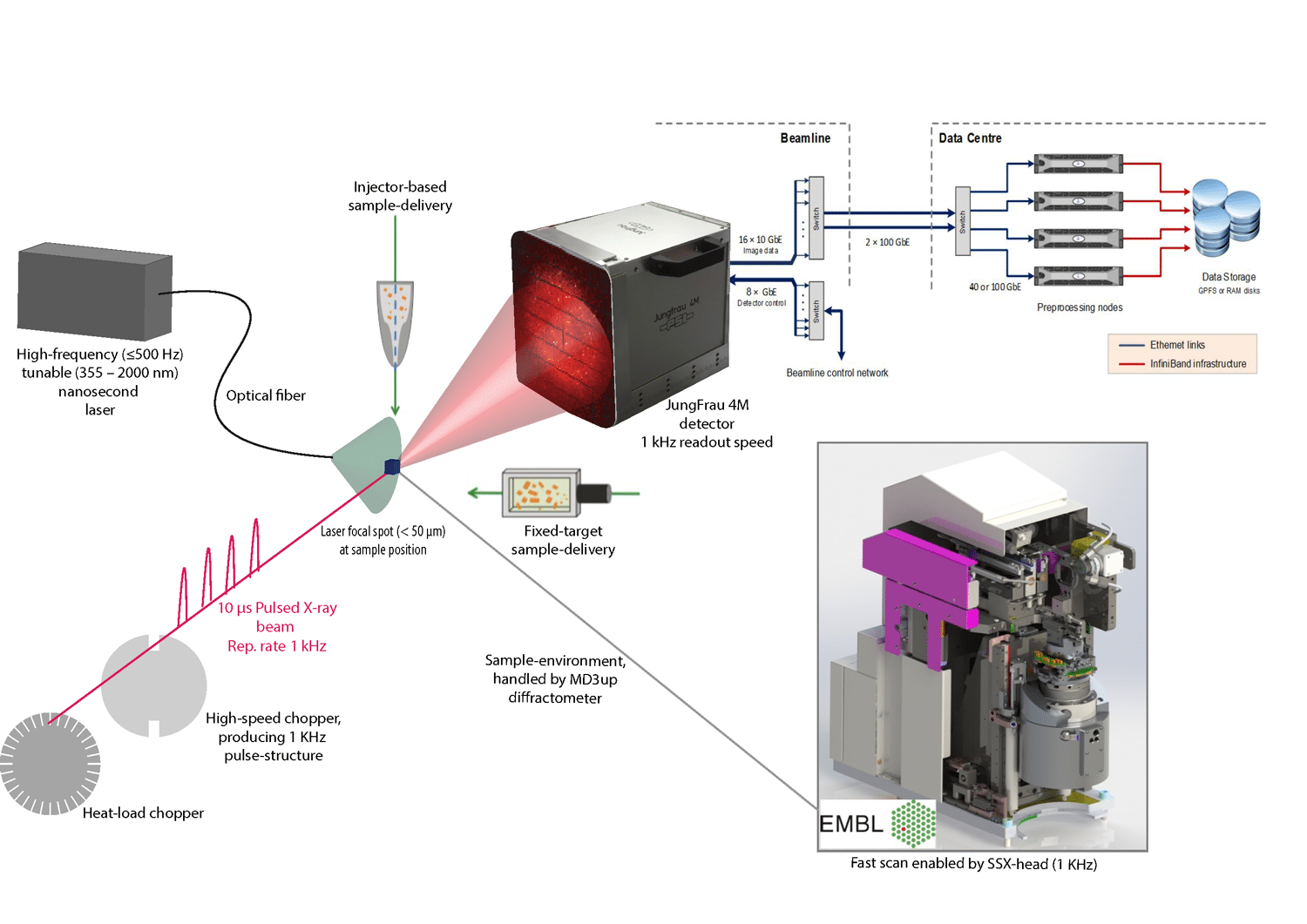Advancing macromolecular structure determination with microseconds X-ray pulses at a 4th generation synchrotron
2024

The EMBL and ESRF have jointly developed a cutting-edge beamline dedicated to time-resolved room-temperature serial microsecond crystallography in order to fully exploit the ESRF Extremely Brilliant Source (EBS) upgrade in 2020. The new ESRF-EBS storage ring produces an extremely low horizontal emittance and is 103 times more brilliant than 3rd generation sources, expanding the scope and nature of Macromolecular crystallography (MX) experiments. The highly focused and intense X-ray beam at the ESRF-EBS bridges the gap between any 3rd generation synchrotron and X-ray free electron lasers (XFELs), enabling data collection from micron-sized biomolecular crystals. Towards this goal ID29 has been entirely re-built to a ‘World’s first of its own kind’ beamline towards µs-time-resolved serial crystallography. This new beamline permits molecular motions to be captured, i.e., time-dependent changes at room-temperature, enabling the study of biological processes through movies.

The beamline produces a fully synchronized 10 – 100 µs pulsed X-ray beam with a continuous flux of ~1015 photons/sec and is equipped with a multi-layer monochromator, resulting in a 1% bandwidth. Currently, the beamline operates at 11.56 keV but tunability between 10 - 20 keV is envisaged. The ID29 – TR-SSX beamline, with a 1 µm2 X-ray beamsize, enables exploration of uncharted territory between 3rd generation sources and XFELs. To facilitate this ID29 is equipped with a state-of-the-art MD3-Up-SSX diffractometer developed by EMBL, a tunable nanosecond high-repetition laser (420 – 2100 nm and 355 nm), and a Jungfrau 4M detector, enabling a data acquisition rate of 925 Hz. ID29 is equipped with fixed-target based delivery methods (Oxford-chip or SOS foils) as well as all three types of high-viscosity extruders (ASU, MPI, and SACLA). The MD3-Up-SSX permits easy adaptation of other experimental setups such as tape-drive, acoustic levitators, as well as any novel technology e.g., microfluidics, quartz capillary based flow-cells etc.
Currently, other synchrotrons worldwide are undergoing similar upgrades to 4th generation sources, implying that more SSX beamlines similar to ID29 at the ESRF-EBS will be built in the next 5 years. ID29 is therefore at the forefront of new instrumentation, data collection strategies, and software solutions, ready to set new standards and herald future SSX beamlines. This in turn will develop and broaden a new user community for serial crystallography experiments worldwide. Anyone who wants to be part of such cutting-edge experiments is highly encouraged to contact Shibom Basu or Andrew McCarthy (Synchrotron Crystallography team) at the EMBL Grenoble.
ID29 is run as a collaboration between the EMBL Grenoble Synchrotron Crystallography Team and the ESRF Structural Biology Group. See the ID29 webpage for more information on the technical details and the ESRF website for application details.
2024
In collaboration with the Structural Biology group at ESRF, we provide access to five macromolecular crystallography beamlines and one biological small angle X-ray scattering beamline at the ESRF.